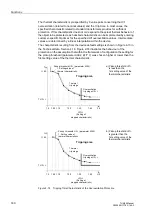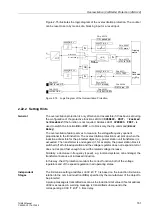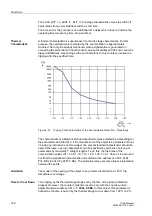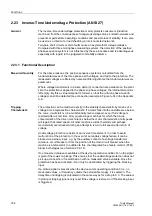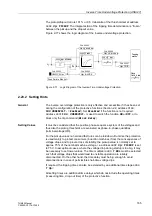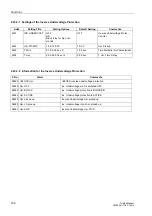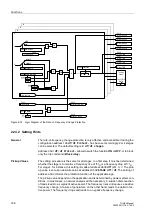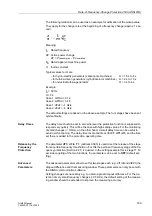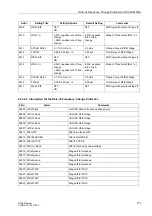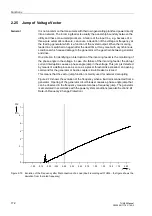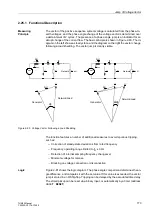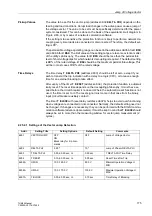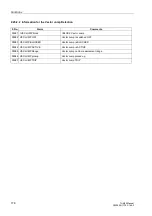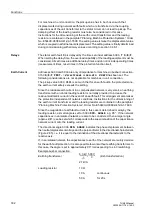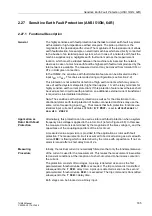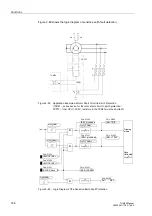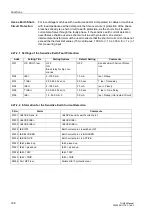
Jump of Voltage Vector
173
7UM62 Manual
C53000-G1176-C149-3
2.25.1 Functional Description
Measuring
Principle
The vector of the positive sequence system voltage is calculated from the phase-to-
earth voltages, and the phase angle change of the voltage vector is determined over
a delta interval of 2 cycles. The presence of a phase angle jump is an indicator for an
abrupt change of the current flow. The basic principle is shown in Figure 2-80. The di-
agram on the left shows a steady state, and the diagram on the right the vector change
following a load shedding. The vector jump is clearly visible.
Figure 2-80 Voltage Vector Following a Load Shedding
The function features a number of additional measures to avoid spurious tripping,
such as:
−
Correction of steady-state deviations from rated frequency
−
Frequency operating range limited to f
N
± 3 Hz
−
Detection of internal sampling frequency changeover
−
Minimum voltage for release
−
Blocking on voltage connection or disconnection
Logic
Figure 2-81 shows the logic diagram. The phase angle comparison determines the an-
gle difference, and compares it with the set value. If this value is exceeded, the vector
jump is stored in an RS flip-flop. Tripping can be delayed by the associated time delay.
The stored pickup can be reset via a binary input, or automatically by a timer (address
).
~
Z
Gen
∆
U
U
I1
Z
Z
NET
I2
Network
Up
Generator
Network/Load
∆
U
U
φ
~
Up
Z
Gen
∆
U
U
I1'
Z
Z
NET
Network
Up
Generator
Network/Load
∆
U
U
∆φ
U'


